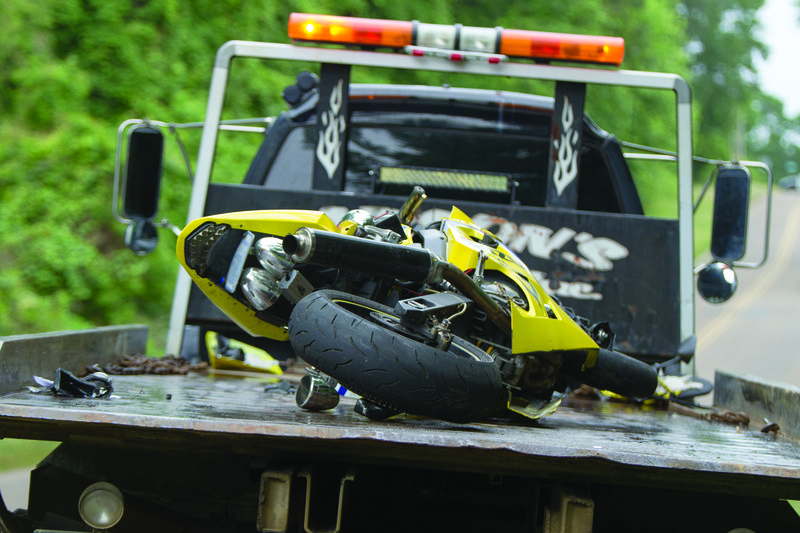The summer weather has drawn more motorcycle riders onto Arkansas roads, and the extra two-wheeled traffic poses risks for riders and drivers alike, authorities said.
In the past week, six motorcycle wrecks in the state have resulted in eight rider fatalities, bringing the total number of motorcycle deaths in 2016 to 44.
Lloyd Vanover, the motorcycle safety coordinator for Arkansas State Police, said June is consistently one of the deadliest months for motorcyclists. So far this month, 13 have died.
More riders bring their bikes out of the garage in June in part because the weather is likely to turn increasingly hot later in the summer, Vanover said. Fewer are on the road in July and August, but the state sees an uptick in motorcycle-related deaths come October when the weather cools and the fall colors arrive.
Vanover said the primary cause of motorcycle fatalities is rider error. A majority of the fatal motorcycle accidents in 2016 have been the fault of the rider, he said.
Many of the wrecks involve only the motorcycle and no other vehicles.
One such single-vehicle wreck occurred Friday morning on Interstate 40. Michael Lilly lost control of his motorcycle, and it flipped, according to a preliminary state police report on the wreck. He and Vicky Lilly were thrown from the bike. Both later died from their injuries, the report said. Vanover said that neither were wearing helmets.
There is no law in Arkansas requiring riders to wear a helmet, but Vanover said doing so could save some lives.
“Nobody plans on having a crash, but when they do, they don’t have that extra protection,” he said.
But riders aren't always at fault in wrecks involving motorcycles. So far this year, Vanover said, several motorcycle fatalities have been because of other vehicles, including two wrecks over the weekend when vehicles crossed over the centerline and hit riders. Three motorcyclists died in those two accidents.
When Vanover teaches motorcycle safety classes, he emphasizes that drivers have limited peripheral vision. He said even if drivers are looking in the direction of a motorcycle, that doesn’t mean they see it.
His advice for drivers? “Look — and look at everything.”
With 44 motorcycle deaths already this year, it’s possible the year-end number will exceed the 2015 and 2014 totals of 77 and 61, respectively.
Vanover said he believes such an increase is likely.
“All I can do is try to educate a few people at a time,” he said.
Learning motorcycle safety
Tim Becker, the riding academy manager at Landers Harley-Davidson in Little Rock, teaches beginner and experienced rider classes. His courses are based on Motorcycle Safety Foundation basic rider curriculum that’s used nationally.
That curriculum originated in the 1970s, but Becker said the types of accidents haven’t changed. They are mostly rooted in riders losing control, said Becker.
For instance, he said, some riders are hesitant to use their front brake out of fear of flipping over the handlebars even though it provides 70 percent of the bike’s stopping power.
Another core part of the curriculum is protective gear. Each rider who takes the course has to wear a Department of Transportation-approved helmet, Becker said.
Regardless of the rider’s experience, “everybody learns something” from his classes, he said.
